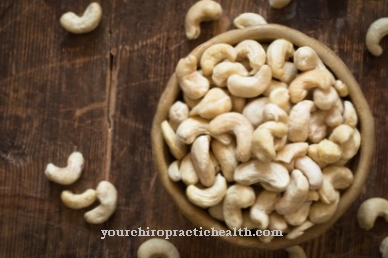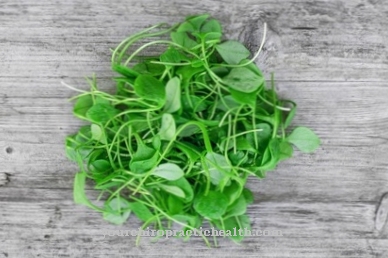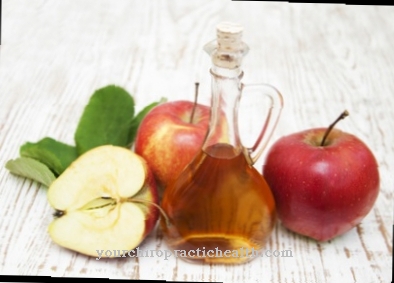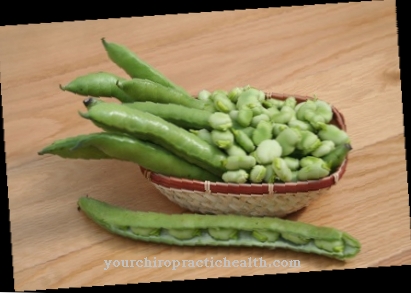sauerkraut is a popular side dish and is also eaten as a stew or soup. The herb is one of the probiotic foods because it contains the health-promoting lactic acid bacteria. It is made from finely chopped white or pointed cabbage.
What you should know about sauerkraut

Even if the sauerkraut is now considered a typical German dish, it is by no means a German invention. It is unclear exactly where it was invented, but it was already known in ancient Greece and ancient China.
Hippocrates, Greece's doctor and philosopher, already described it as a healthy food and medicine. In Europe, sauerkraut was cultivated in numerous monastery gardens in particular. It has been produced industrially since the 19th century. To make the sauerkraut, the cabbage is sliced into thin, even strips and salt is added. The juice is produced by pounding, which causes fermentation. Lactic acid bacteria ferment the sugar contained in cabbage to lactic acid, which lowers the pH value and increases the vitamin C content.
The herb is preserved through lactic acid fermentation. The aim of this technique is to preserve vegetables. The sauerkraut was also very popular with seafarers, as the abundant vitamin C it contained protected them from the dreaded vitamin deficiency scurvy on long voyages. This initially leads to a decline in performance and, if left untreated, it can even be fatal. The herb was ideal for long voyages due to its long shelf life.
The sauerkraut is now known worldwide. It is imported to a very limited extent. Sauerkraut is available canned in supermarkets all year round. It can also be bought loose in butcher shops and markets. Raw sauerkraut contains most of the minerals and vitamins. It tastes spicy and sour and has a fine, sour aroma.
Importance to health
Our grandparents and great-grandparents already knew that sauerkraut is healthy. Hildegard von Bingen, who played an important role in nutrition and medicine, also saw sauerkraut as a valuable remedy for various diseases and ailments, such as inflammation, ulcers, gout and headaches.
She has also recommended it as a digestive, blood and skin cleanser. The cheap, lactic-acid vegetables have a positive effect on health in a variety of ways. Sauerkraut contains a lot of vitamin C and this in an optimal form, so that a maximum of a third of it is lost even if you warm it up several times. The folic acid additionally contained supports the absorption of the vitamin. Regular consumption of sauerkraut can prevent the formation of carcinogenic substances in the intestine. The reason for this is the lactic acid it contains, which ensures a healthy bacterial flora in the intestine and thus supports the body's immune defense. The dietary fiber, which is also abundant, also means that the food residues are quickly transported away and do not settle in the intestine.
It also contains secondary plant substances, which have a positive effect on blood clotting and promote digestion. This even provides protection against cancer. The sauerkraut also helps with tissue over-acidification, for example rheumatism and gout, as well as increased blood sugar and blood lipid levels. It is also a great source of vitamin K. This promotes blood clotting and wound healing. There is also a vitamin K deficiency with liver dysfunction, gallbladder disease and blood loss, for example after surgery.
Just one or two servings a week are enough to compensate for nutritional deficiencies and keep the body healthy. The probiotic sauerkraut juice is also considered to be digestive and should help with weight loss. In the event of constipation, two glasses in the morning are a good success. A sauerkraut cure is very effective for strengthening the immune system and cleaning the intestines. For this purpose, 150 grams of fresh sauerkraut are eaten twice a day for four weeks.
The messenger substance acetylcholine it contains has a calming effect on the vegetative nervous system. This is why some neurologists recommend a three-month cure with lots of sauerkraut for depressed patients. The sauerkraut should be an integral part of the diet due to its positive effects.
Ingredients & nutritional values
| Nutritional information | Amount per 100 gram |
| Calories 19 | Fat content 0.1 g |
| cholesterol 0 mg | sodium 661 mg |
| potassium 170 mg | carbohydrates 4.3 g |
| protein 0.9 g | vitamin C 14.7 mg |
Sauerkraut provides the body with vitamins A, B, C and K, folic and lactic acid, iron, potassium, calcium and sodium. In addition, there are valuable secondary plant substances in the herb. It is low in carbohydrates, fat, hardly any protein and therefore low in calories. It also has no cholesterol, very little purines, but a lot of fiber, which stimulates digestion.
Intolerances & allergies
Like all fermented foods, sauerkraut contains histamine. In sensitive people, this can lead to intolerance reactions such as nausea, diarrhea and headaches. If you drink sauerkraut juice every day during a cure, you should note that it has a strong laxative effect. Sauerkraut can cause gas. Adding cumin, fennel, or grated ginger while cooking can alleviate or even prevent these.
Shopping & kitchen tips
Homemade sauerkraut is made from fresh white cabbage and can be kept for a few months in a cool cellar. If the herb is briefly boiled down in mason jars and stored in a cool and dark place, it will stay fresh longer.
An easier and faster option is to buy the herb in canned food or jars. Fresh sauerkraut is crisp, light and smells slightly sour. It can be kept in a sealed jar in the refrigerator for up to two days. Poorly fermented or overlaid sauerkraut, on the other hand, often has a bitter, over-sour or musty taste. Sauerkraut should not be bought in plastic containers or in pre-packaged plastic bags. Due to the acid contained, poisonous substances can be released from the packaging, which destroys the vitamins and spoils the taste of the herb.
Preparation tips
The herb is often used in soups and stews because of its sour note. But it is also very popular as an accompaniment to meat dishes such as pork pork or pork knuckle, with mashed potatoes and sausages, and in casseroles. It is also very suitable with potatoes and potatoes. In terms of taste, it goes well with many dishes, but especially with hearty dishes. The sauerkraut is steamed with a little water for about half an hour.
After the fermentation process, it goes particularly well with caraway seeds, juniper berries, dill, bay leaves, marjoram, diced onions, carrots, apples, buttermilk and wine. Caraway makes the sauerkraut more digestible. The vegetables are also great for reheating. The following day, many people taste it even better because of its softer consistency. Cooking for a long time will make it crumbly and easier to digest. If the sauerkraut is too sour for you, you can soften the taste with a little honey.













.jpg)

.jpg)
.jpg)











.jpg)